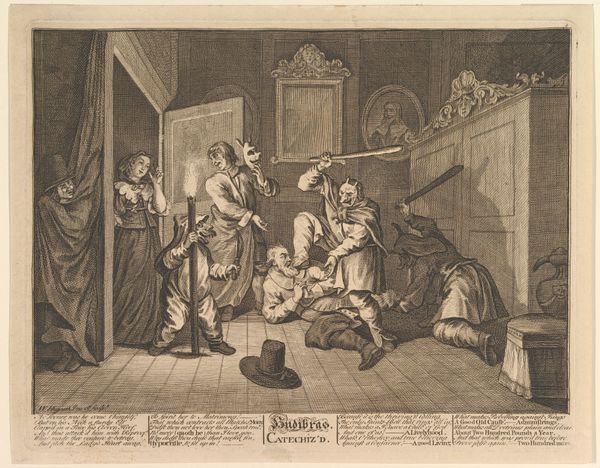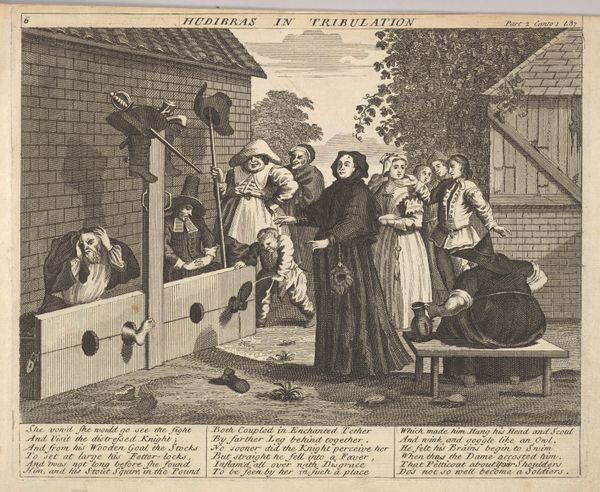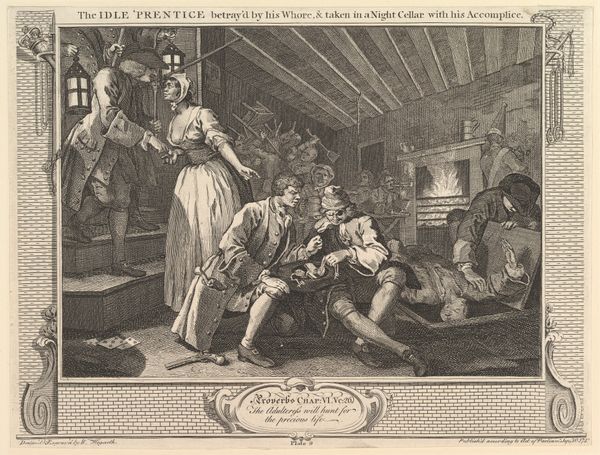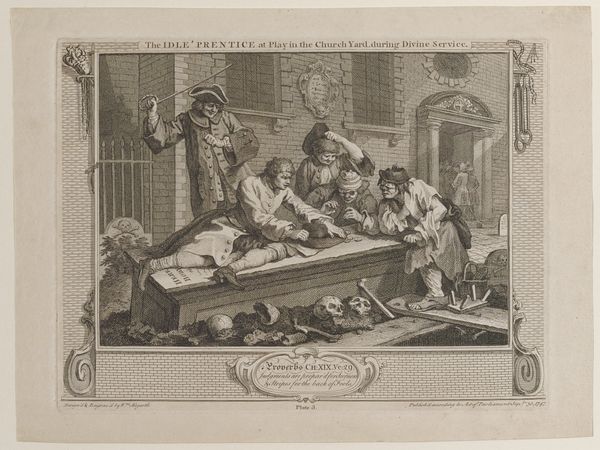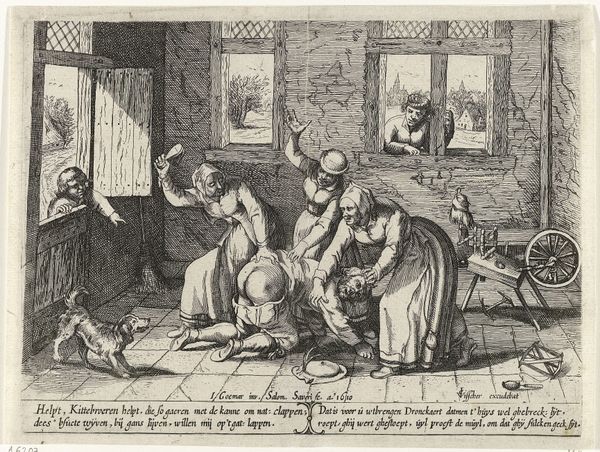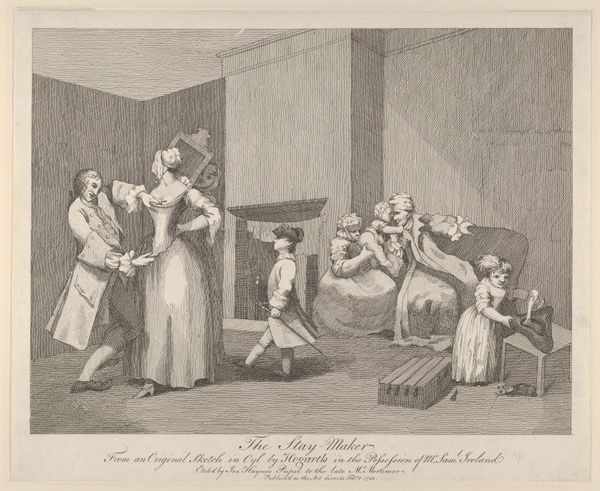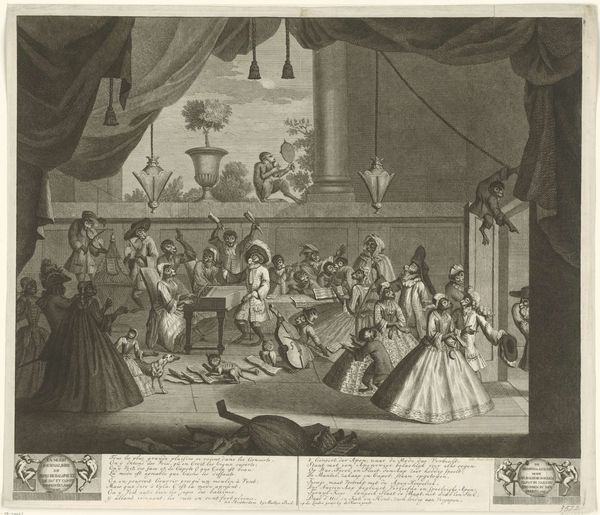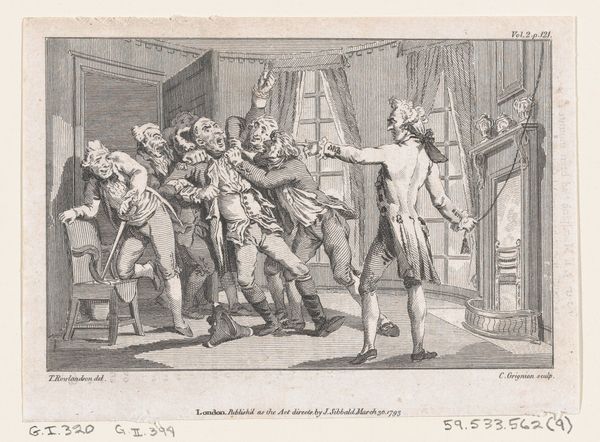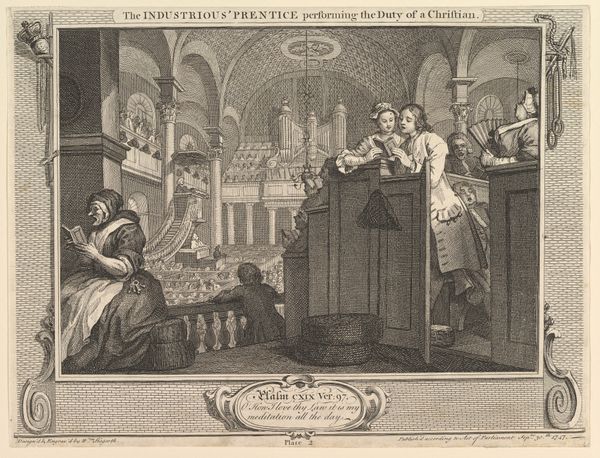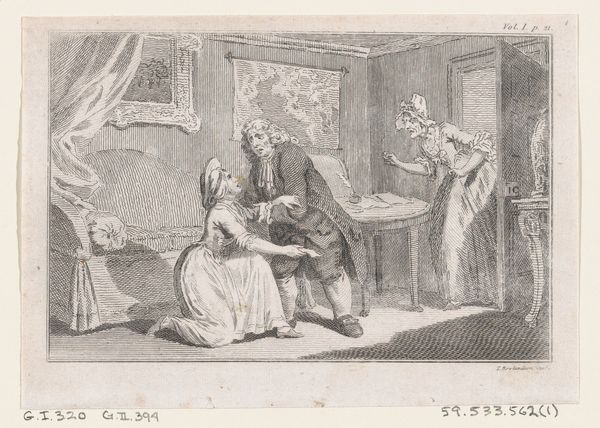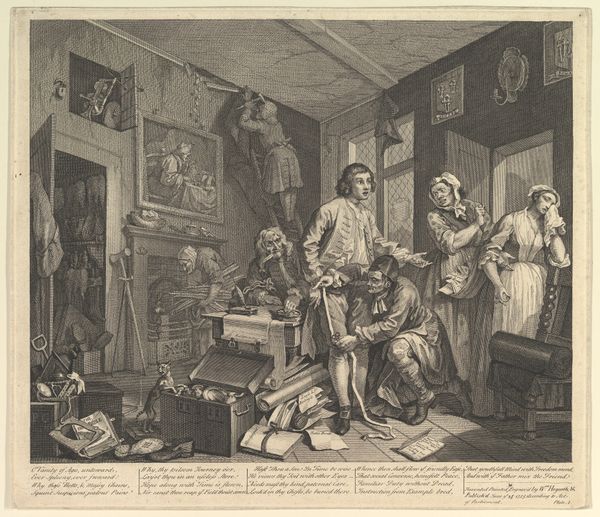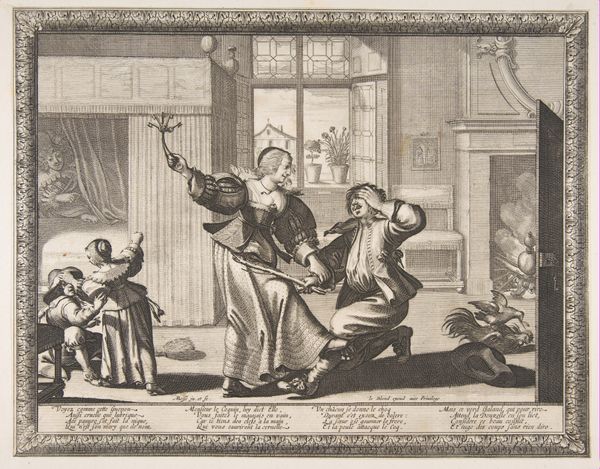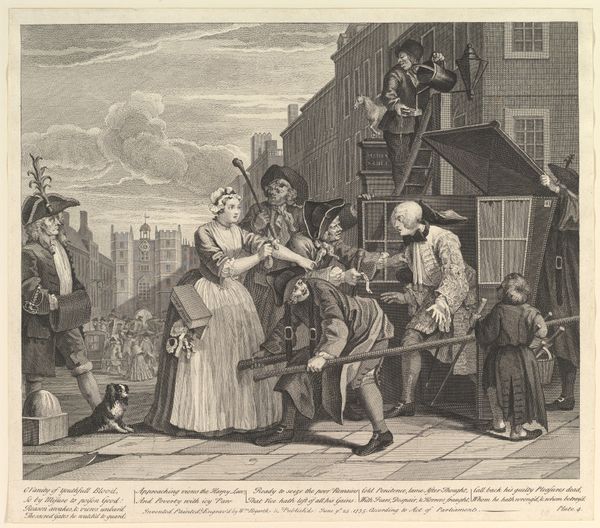
Hudibras Catechized (Plate 9: Illustrations to Samuel Butler's Hudibras) 1725 - 1730
0:00
0:00
drawing, print, etching, engraving
#
drawing
#
narrative-art
#
baroque
# print
#
etching
#
figuration
#
men
#
line
#
genre-painting
#
history-painting
#
engraving
Dimensions: Plate: 7 3/4 x 9 5/16 in. (19.7 x 23.7 cm) Sheet: 8 1/8 x 10 15/16 in. (20.7 x 27.8 cm)
Copyright: Public Domain
Curator: Here we have William Hogarth’s "Hudibras Catechized," from around 1725-1730. It's an etching and engraving, one of a series illustrating Samuel Butler's satirical poem. Editor: It strikes me immediately as a theatrical scene, or maybe a rather cruel practical joke. The exaggerated expressions, the chaotic composition… It’s unsettling, almost cartoonish in its energy. Curator: Indeed. Hogarth was deeply interested in representing social mores and political commentary through his art. The Hudibras series skewers religious hypocrisy and the ridiculous aspects of Puritanism that remained in the period. It critiques specific social behaviors, right? Editor: Absolutely, but what fascinates me are the technical means through which this social commentary is delivered. The fine lines of the engraving, the way light and shadow are created – Hogarth was a master craftsman and could generate an entire sense of place, production, and labor via the materials he used. Look at the layering and precision – he understood the economy of production. Curator: Precisely. He’s using popular imagery to make quite scathing critiques accessible to a wider audience. And the print medium itself is crucial; these images circulated widely. Think about the role the printing press played in the dissemination of these socio-political ideas and what kind of conversations they ignited back then. Editor: Consider, too, the cost and the labor behind creating such an object; the availability of these prints meant Hogarth's ideas weren't restricted to the elite, therefore expanding his scope. The use of etching specifically democratizes the means of creation, too, no? Curator: Very true. Hogarth was incredibly savvy in his awareness of the art market and understood how prints could give him more agency in controlling and sharing his visual narratives. He even fought for copyright laws to protect artists' works. Editor: Ultimately, it seems Hogarth wasn’t just making art; he was using production as a political act itself. A pointed observation on materials, methods, labor and audience, just as crucial as what’s depicted in the scene itself. Curator: A crucial addition to our understanding of this remarkable and influential artist. Editor: An important aspect that brings a sharp edge to how we look at it now.
Comments
No comments
Be the first to comment and join the conversation on the ultimate creative platform.
